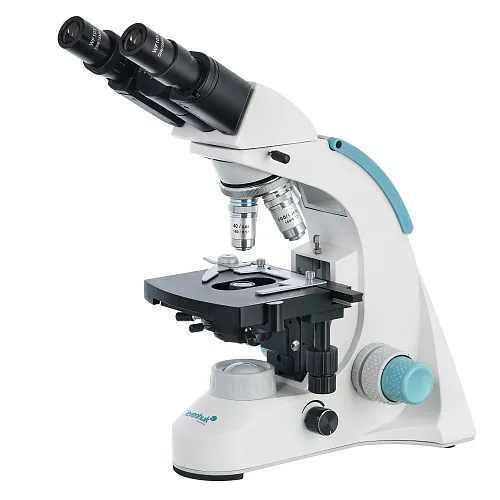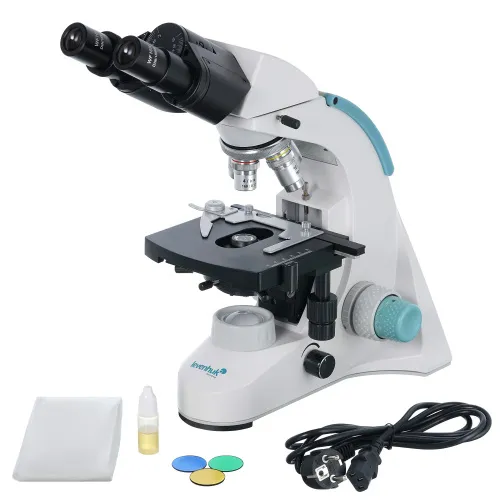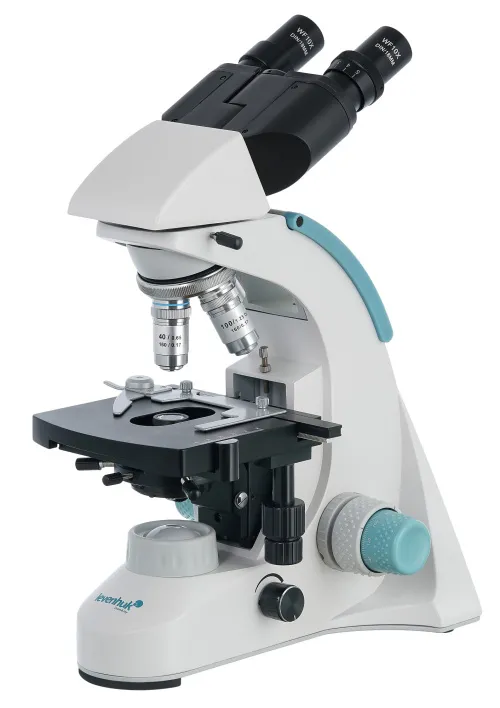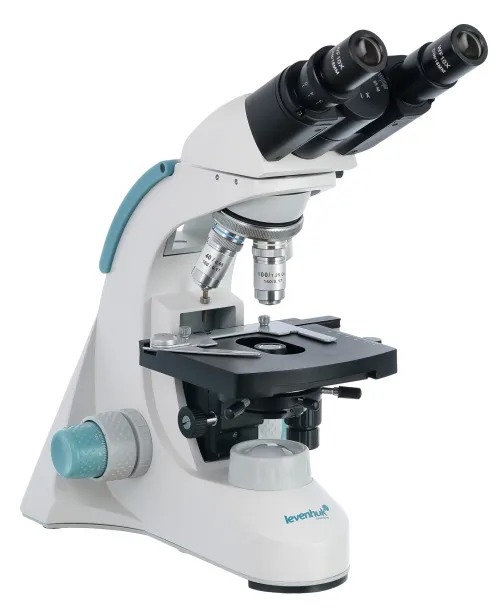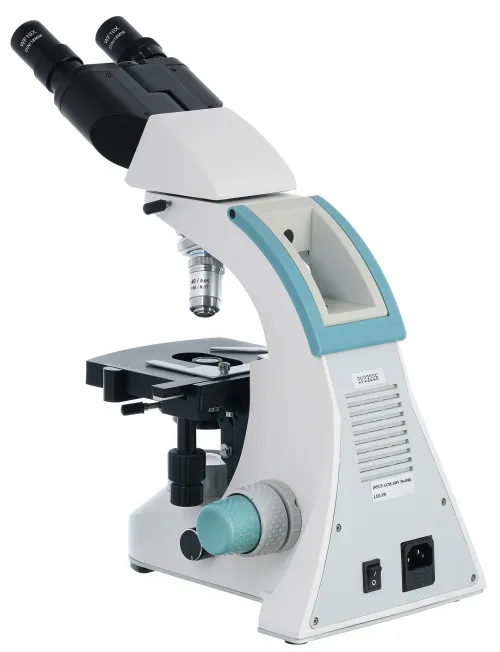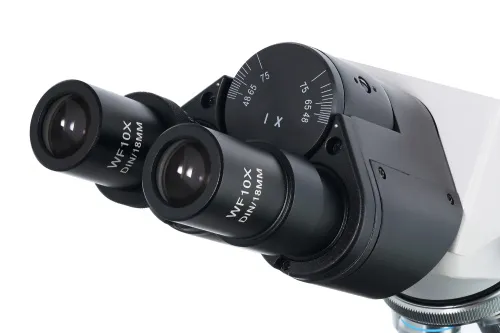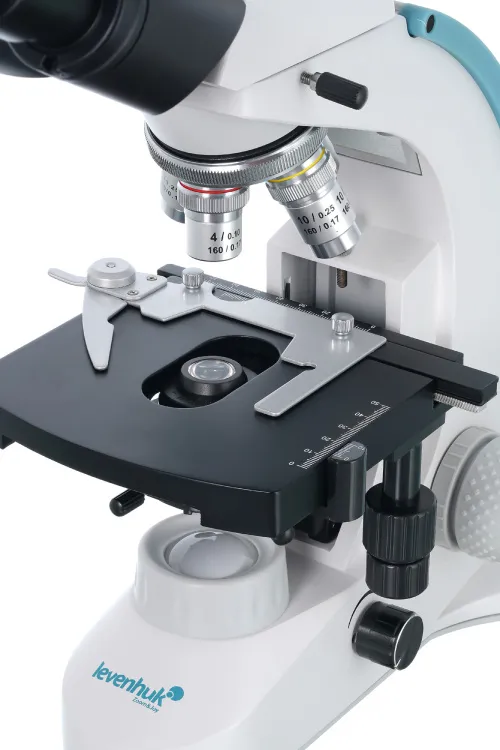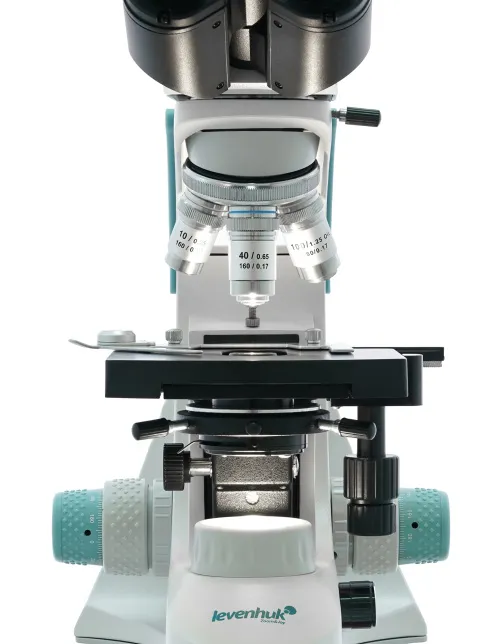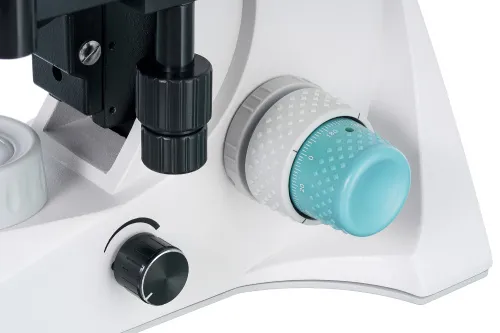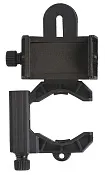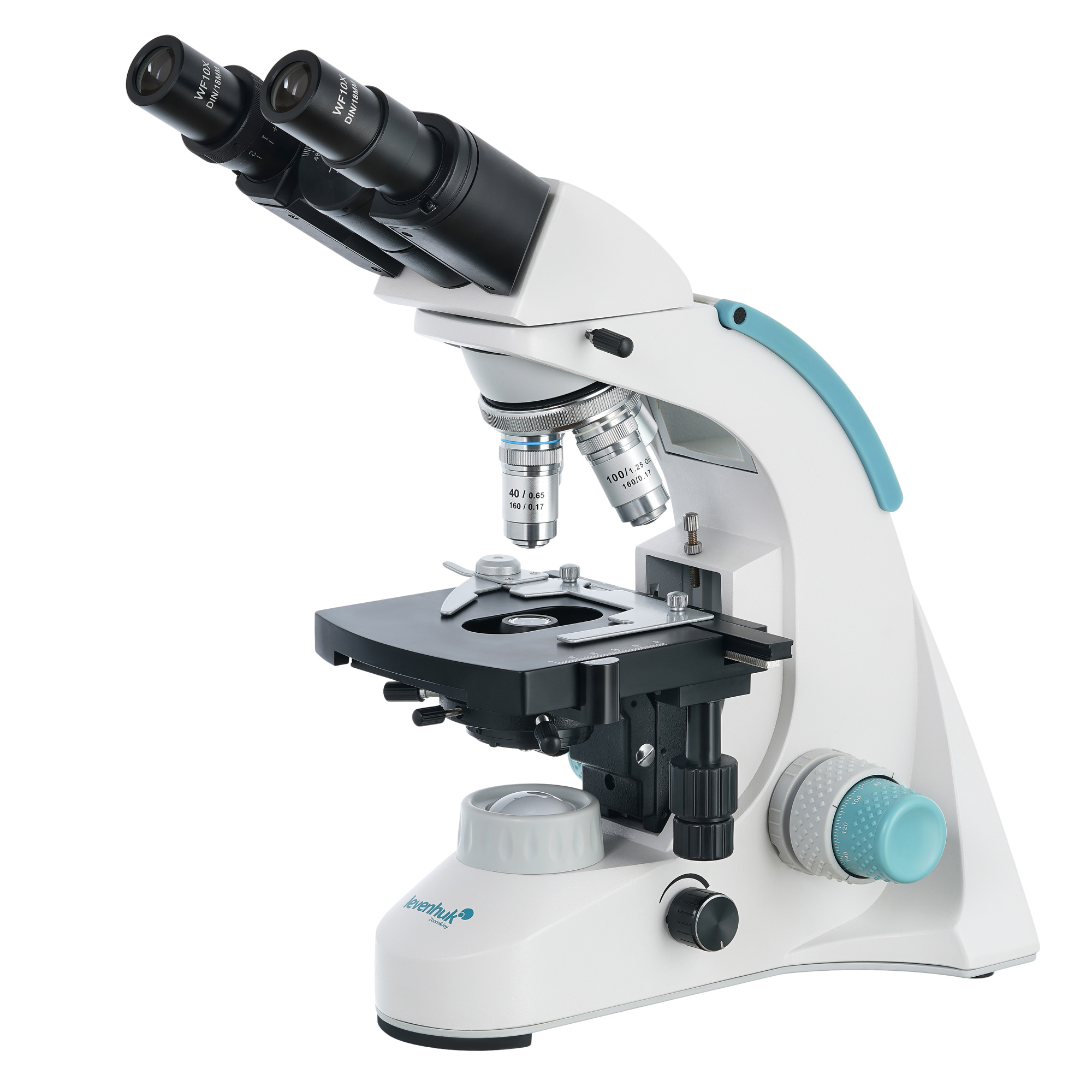Levenhuk 900B Binocular Microscope
Magnification: 40–1000x. Binocular head, achromatic objectives, LED light with a collector
| Product ID | 75429 |
| Brand | Levenhuk, Inc., USA |
| Warranty | lifetime |
| EAN | 5905555005331 |
| Package size (LxWxH) | 51x25x40 cm |
| Shipping Weight | 6.38 kg |
Levenhuk 900B is a binocular laboratory microscope with a powerful LED light and magnification range from 40 to 1,000 times. It is perfect for medical, microbiological, veterinary, and biochemical research. It can be applied in a clinic and in a higher education department. The microscope can be used for a wide range of works.
A binocular microscope head is inclined at 30°, which is practical for lengthy observations. The achromatic optics provide a good view. The kit includes two wide-field eyepieces with 10x magnification and four objectives with 4x, 10x, 40x, and 100x magnification. The 100x objective is adapted for oil immersion. Two objectives feature front lens protection (a spring-loaded frame): 40x and 100x ones. Use focusing knobs on the microscope body for coarse and fine focusing adjustment.
The lighting unit illuminates the stage from below. The microscope slides are placed on the table with the help of a mechanical scale. The light beam is controlled by an Abbe condenser with an iris diaphragm, while the lighting itself is powered by an AC power supply. The lighting source is a powerful 3-watt LED light with a collector.
Levenhuk 900B is a reliable optical tool with the high-quality optics.
Features:
- Binocular rotatable head
- Wide-field eyepieces, achromatic objectives
- Optics magnification range: 40–1000x
- Powerful 3W LED light with a collector
- Brightness adjustment; an AC power supply
The kit includes:
- Microscope
- 4x, 10x, 40xs, 100xs (oil) achromatic objectives
- WF10x/18mm eyepieces (2 pcs)
- Abbe condenser N.A. 1.25 with an iris diaphragm and a filter holder
- Filters: blue, green, yellow
- Fuse
- Bottle of immersion oil
- Power cord
- Dust cover
- User manual and lifetime warranty
| Product ID | 75429 |
| Brand | Levenhuk, Inc., USA |
| Warranty | lifetime |
| EAN | 5905555005331 |
| Package size (LxWxH) | 51x25x40 cm |
| Shipping Weight | 6.38 kg |
| Type | biological, light/optical |
| Microscope head type | binocular |
| Optics material | optical glass |
| Head | 360 ° rotatable |
| Head inclination angle | 30 ° |
| Magnification, x | 40 — 1000 |
| Eyepiece tube diameter, mm | 23.2 |
| Eyepieces | WF10x/18mm (2 pcs.) |
| Objectives | achromatic: 4x, 10x, 40xs, 100xs (oil immersion) |
| Revolving nosepiece | for 4 objectives |
| Interpupillary distance, mm | 48 — 75 |
| Stage, mm | 130x120 |
| Stage moving range, mm | 70/30 |
| Stage features | mechanical double-layer |
| Eyepiece diopter adjustment, diopters | ±5 |
| Condenser | Abbe N.A. 1.25 with an iris diaphragm and filter holder |
| Diaphragm | iris |
| Focus | coaxial, coarse (25mm) and fine (0.002mm) |
| Body | metal |
| Illumination | LED |
| Brightness adjustment | ✓ |
| Power supply | 110–220V |
| Light source type | with a collector, 3W LED |
| Light filters | blue, green, yellow |
| User level | experienced users |
| Assembly and installation difficulty level | easy |
| Application | laboratory/medical |
| Illumination location | lower |
| Research method | bright field |
| Pouch/case/bag in set | dust cover |
We have gathered answers to the most frequently asked questions to help you sort things out
Find out why studying eyes under a microscope is entertaining; how insects’ and arachnids’ eyes differ and what the best way is to observe such an interesting specimen
Read this review to learn how to observe human hair, what different hair looks like under a microscope and what magnification is required for observations
Learn what a numerical aperture is and how to choose a suitable objective lens for your microscope here
Learn what a spider looks like under microscope, when the best time is to take photos of it, how to study it properly at magnification and more interesting facts about observing insects and arachnids
This review for beginner explorers of the micro world introduces you to the optical, illuminating and mechanical parts of a microscope and their functions
Short article about Paramecium caudatum - a microorganism that is interesting to observe through any microscope

